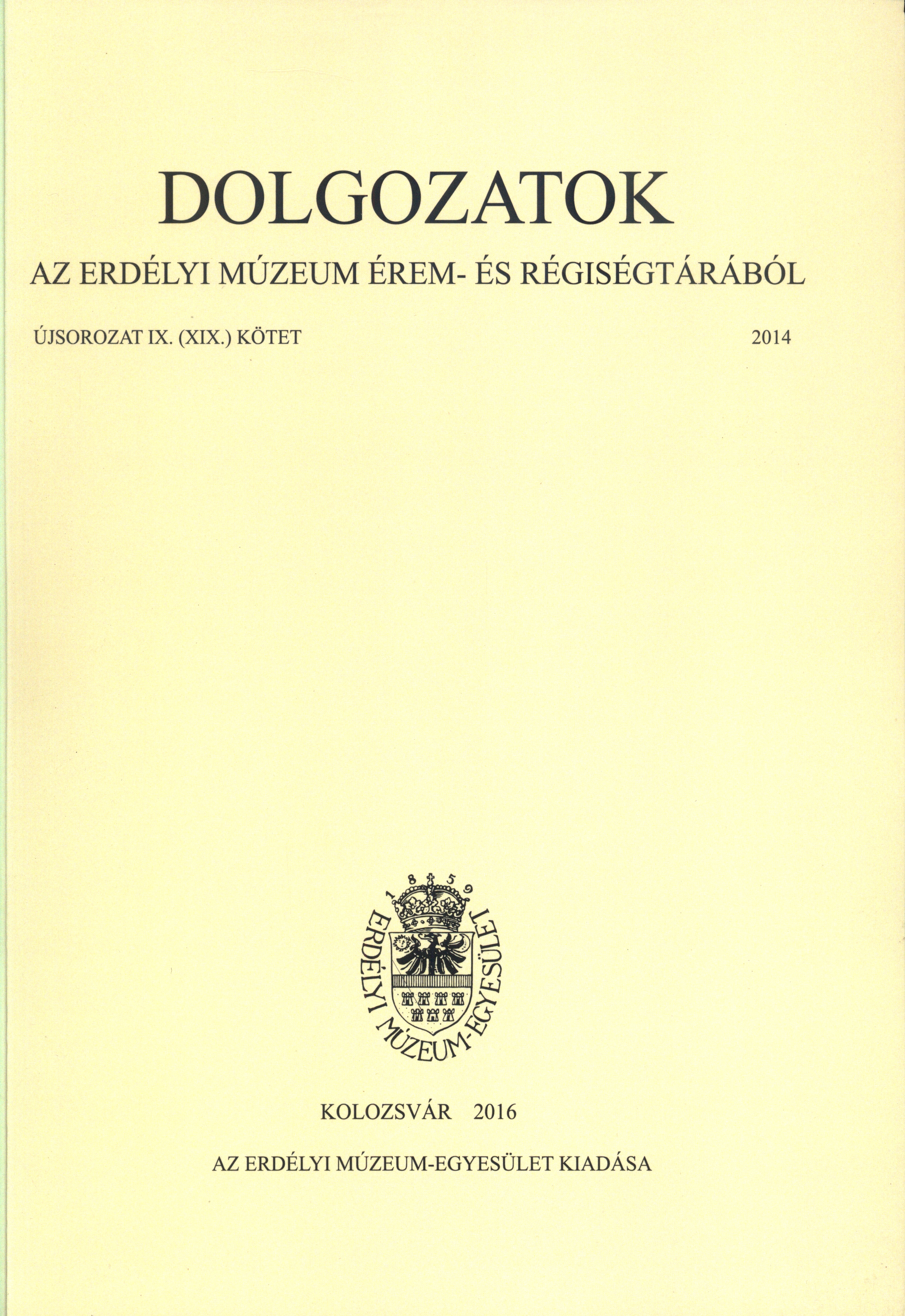Mentőásatások Nagylak-7M lelőhelyen. Késő ókori (szarmata?), késő avar és 10–11. századi (?) temetőrészletek, sírcsoportok
Rescue Excavations on the Site of Nădlac-7M. Cemetery Sections and Groups of Graves from the Late Antique (Sarmatian?), the Late Avar Age and the 10th‒11th (?) Centuries
Author(s): Erwin Gáll, Malvinka Urák, Sorin Cociş, Adrian UrsuţiuSubject(s): Archaeology, Cultural history
Published by: Erdélyi Múzeum-Egyesület
Keywords: Nădlac; late Avar period; burial customs; material culture; 8‒9th centuries; periphery
Summary/Abstract: Nădlac (Hu: Nagylak, Ger: Nadlak, Slo: Nadlak) Site 7M is located on a slightly raised elevation that is bordered by wetlands on all sides except the eastern one even in present-day. Due to the rainy weather at the time of the excavations, the water table rose even to the level of recognition of the finds, which made the field research difficult and explains the poor state in which the finds have been preserved, especially the iron ones. During the above noted archaeological research, 32 complexes were discovered: three dwellings (no. 8-10) dated to the 5-4 centuries BCE; six incineration burials (nos. 12, 14, 27, 28, 31, 34) dated to the La Tène C period; ten inhumation burials (nos. 1, 3, 4, 15, 16 A-B, 17, 19-21, 36, 37) from the Late Avar period; the complete skeleton of a horse, also from the Late Avar period (no. 25); three, probably, Sarmatian burials (nos. 26, 29, 30); four inhumation burials (nos. 18, 22, 24, 32), most likely dated to the 10-11th centuries AD; four modern finds (no. 11, 13, 23, 35); four animal burrows (no. 2, 5, 6, 7 – cancelled complex numbers). According to the analysis of the burial customs, various object categories of the material culture (lock rings, earring, beads, components of belts with mounts, knives, pottery) can be dated to the end of the late Avar era, which corresponds to the late 8th or early 9th century. It can firmly be stated that some of the finds were the products of the latest metallurgical horizon (e.g. the punched belthole guard mount and the belt mounts with pendants). So some of the types found here can be connected to the last horizon, which is very important concerning their dating. The identity of the micro-community in Nădlac and their self-identification with a political community were influenced by the fact that they were a primary group. For them their micro- and macro-community traditions and their values and traditions at a micro-community level coming from their way of life might have been much more important than their ethnic identity. According to the clusters of late Avar sites and the supposed location of the hypothetical ‘workshop circles’ in the Carpathian Basin, it is clear that the cemetery researched by us and its micro-region is situated outside the central territories. This seems to be supported by the heterogeneity of the belt sets, which shows that the members of this community had more difficulty obtaining the various decorations. The anthropological deformations indicating hard physical work also seem to underpin this ‘peripheral’ status. Its location seems to show clearly that this micro-region, and within this, the cemetery of this animal breeding and agricultural, pagan people, is on the periphery of the power centre(s) of the Great Plain. They were the common people of the late Avar Khaganate in the eastern region of the Great Plain. We can talk about the cemetery of a settlement from the late Avar period, which was on the periphery, under the Khagan or some other Avar chief or big man (tudun, iugurus). The group made up of graves 18, 22, 24, and 32 is dated to the 10th-11th centuries by the fragments of a deltoid arrow head found under the right shoulder of the skeleton in grave 32. Another aspect seems to support this assumption: the graves dating from the 10th-11th centuries in the southern region of the Great Plain are characterised by different arm positions. In addition, at the end of the article detailed analyses can be found of the anthropological (Appendix 1.) and of the archaeozoological material (Appendix 2.), in addition to a study regarding the egg shells (Appendix 3.), all from the Avar graves.
Journal: Dolgozatok az Erdélyi Múzeum Érem- és Régiségtárából. Új sorozat
- Issue Year: 2014
- Issue No: IX
- Page Range: 5-107
- Page Count: 103
- Language: Hungarian

